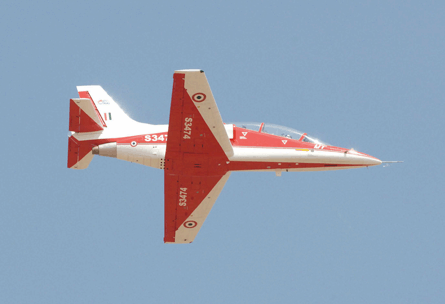As economies continue to be mired in recessions and stock markets remain depressed, analysts believe one of the most testing periods in the aerospace industry's history is ahead.
India has not escaped. Pessimism will cast a pall over the Aero India 2009 show, which is usually the highlight of the country's aerospace calendar. The biennial event, to be held from 11-15 February at Yelahanka air base in Bangalore, brings together exhibitors and attendees from all over the world to what has been one of the fastest-growing international markets for a long time. This year, many are approaching it with trepidation.
Yet 12 months ago the mood on India's prospects was bullish. Airlines were bragging about their large backlog of aircraft orders and growing traffic numbers, while business aircraft orders were increasing by the month as profitable companies and their chief executives, as well as the rich millionaires and billionaires, decided that private jet travel was the way to go.
LIMITLESS OPPORTUNITES
There was a shortage of pilots, engineers and cabin crew, and the infrastructure could not keep up with the growth in demand. Foreign companies were falling over each other to form partnerships with Indian companies and invest in a country where the opportunities appeared to be limitless.
Now the situation has turned on its head. Survival is the main aim for airlines. A wave of consolidation has accelerated as bigger carriers swallowed up smaller ones, and alliances formed among those remaining in an attempt to cut costs and survive. Almost everyone is trying to defer aircraft orders or give up their delivery slots as they cut unprofitable routes and pare down expenses.
Profitability continues to elude them. "India is one of the epicentres with potential losses of $1.5 billion this year," International Air Transport Association director general Giovanni Bisignani said recently. This figure will be "the largest outside the USA", he said, and that "urgent action is needed to help Indian carriers weather the perfect storm of high costs and falling demand".
 |
|---|
© Hindustan Aeronautics |
Similarly, the Indian business aviation sector has gone from boom to doom. After a rush of orders for corporate jets over the last few years, the falling stock market has wiped out fortunes and forced many to cancel or defer their plans. "The corporate aircraft management business could fare relatively better as those with deeper pockets ride out the storm, but charter brokers and fractional ownership operators are wondering where they are going to find business in 2009," says one operator of business jets.
One silver lining is that the defence sector appears to be holding up. New Delhi is projected to spend around $30 billion in military procurements in the coming years as part of its plan to modernise its armed forces. As a result, its stringent offsets regulations will ensure that some of that will spill over to Indian companies. Yet, if the economic situation worsens, some analysts expect the government to cut this spending and increase the money it channels to welfare programmes.
Amid the gloom, however, analysts say that one important factor cannot be forgotten. India's aerospace industry is growing from a low base, and it still has good mid- to long-term prospects. Times may be bad now, but this could be the opportunity to make the necessary changes and investments to ensure the sector emerges even stronger when the downturn ends. A successful Aero India 2009 could help some find their way to a better future.
Source: Flight International




















